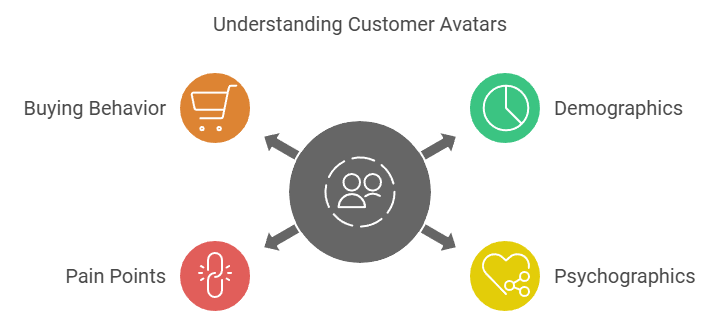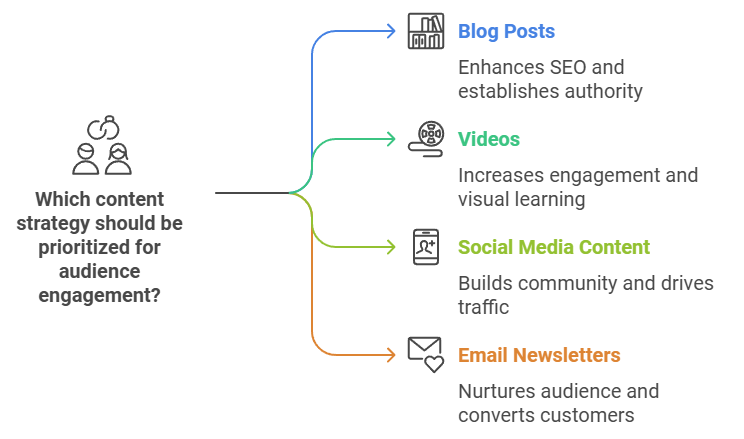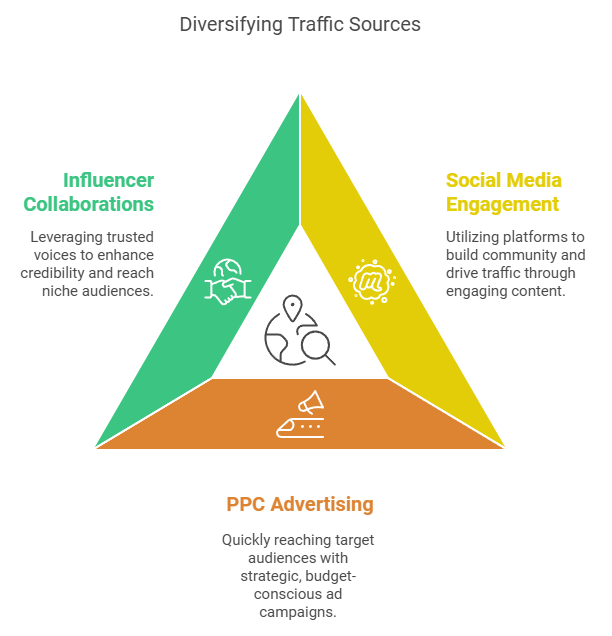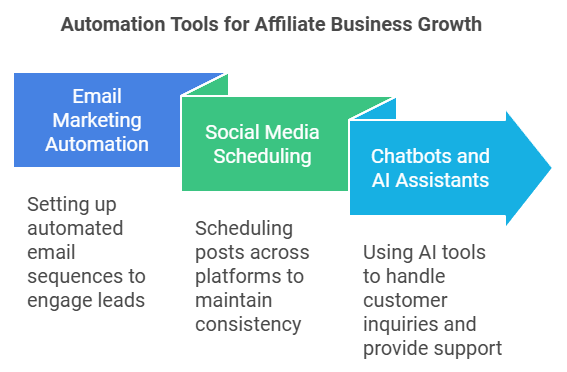Affiliate marketing is booming. The rise in digital shopping habits, increased consumer trust in online recommendations, and the shift toward e-commerce have all contributed to its rapid growth. In 2023, U.S. e-commerce affiliate marketing sales reached $71 billion, growing at an impressive 10% year-over-year. If you’re serious about growing your income streams, affiliate marketing isn’t just a side hustle anymore—it’s a genuine opportunity to build a six- or even seven-figure income.
Why is Affiliate Marketing so attractive?
So, what exactly is affiliate marketing, and why is it so attractive? At its core, affiliate marketing is simple: you earn commissions by promoting other companies’ products. You don’t need to worry about inventory, shipping logistics, or customer service headaches, making it a low-risk, high-reward way to start making money online, especially if you’re ready to put in the work to scale. It’s a low-risk, high-reward way to start making money online, especially if you’re ready to put in the work to scale.
Here’s the deal: many people dip their toes into affiliate marketing, but only a few understand how to take it to the next level—to transform a modest side income into a seven-figure empire. Scaling means expanding beyond just the basics. It involves leveraging multiple strategies to maximize growth and making data-driven decisions to push profitability.
Looking for something else?
Laying the Foundation: Understanding Your Audience and Choosing the Right Niche
Identifying Your Ideal Customer Avatar
To scale your affiliate marketing business, you must know your audience precisely. It sounds simple, but most people skip this foundational step—and it costs them. Understanding your audience is everything. Why? Because if you’re not speaking directly to your target audience’s needs, you’re just another voice lost in the noise.
So how do you get started? You need to create your ideal customer avatar. This isn’t just a vague idea of your audience; it’s a detailed persona that represents your perfect customer. For example, imagine your ideal customer is a 35-year-old working mother named Sarah who values convenience and quality. She’s tech-savvy, loves finding practical solutions to make her life easier, and often relies on online reviews before making a purchase. Think of it like this: Who do you picture buying the products you’re promoting? What are their goals, challenges, fears, and desires?

To really define your customer avatar, consider these characteristics:
- Demographics: What is their age, gender, income level, and educational background?
- Psychographics: What motivates them? What are their core values and interests?
- Pain Points: What challenges are they facing that you can help solve?
- Buying Behavior: How do they make purchasing decisions? Are they impulsive buyers or do they research everything first?
By answering these questions, you build a clear picture of your audience. This clarity helps you tailor your content, align your marketing strategy, and ultimately, increase conversions. The more precise you are, the easier it becomes to create content that resonates—and that’s the secret to growing your affiliate income.
Selecting a Profitable Niche
Once you know your audience, it’s time to choose a niche. Let’s be real: not all niches are created equal. Some are more profitable than others, and if you want to make real money, you need to find the right one.
A profitable niche has three key characteristics:
- High Demand: Look for niches with at least 1,000 monthly searches and a growing audience. Use tools like Google Trends, Ahrefs, or SEMrush to gauge interest. A niche with consistent or increasing demand will give you better scaling opportunities.
- Low to Moderate Competition: You want a niche that’s not so saturated that you’ll be up against every marketer out there, but not so obscure that no one’s searching for it. Finding the sweet spot is crucial. Start by researching the top players in your chosen area—if you see a handful of dominant figures, but also some smaller players succeeding, you’re probably onto something good.
- Profitability: Not all high-demand niches are profitable. Make sure that the products or services you promote offer good commission rates. Look into affiliate programs that pay well and have a solid reputation. Niches like health, finance, and technology are often more lucrative, but they also tend to be competitive—so weigh your options carefully.
Here’s a tip: Start with something you’re genuinely interested in. Scaling is a long-term game, and if you’re not interested in the niche, you’ll lose steam quickly. For example, Pat Flynn, a successful affiliate marketer, chose the personal finance niche because of his genuine passion for helping others achieve financial independence, which helped him stay motivated and grow his business. The best niches are a combination of profitability, demand, and personal interest. Passion plus opportunity equals profit. Look for market gaps or untapped segments within your niche—these are opportunities that can set you apart and drive growth.
Key Takeaways
- Define your ideal customer avatar in detail—know their demographics, motivations, and pain points.
- Pick a niche with high demand, reasonable competition, and solid profitability potential.
- Pick something you’re passionate about, as it will make scaling far more sustainable.
Now that we’ve laid the foundation, let’s talk about content—because without great content, even the best niche and audience targeting won’t get you far. Let’s dive into that next.
Content is King: Creating High-Quality Content That Converts

Developing a Diversified Content Strategy
If you want to scale your affiliate marketing business, high-quality content is the engine that drives growth. It builds trust, establishes authority, and keeps your audience coming back for more. But relying on a single content type won’t cut it—you need a diversified strategy to reach your audience wherever they are. The more diverse your content, the wider your reach, and the higher your chance of conversions.
Here’s how to do it:
- Blog Posts: Start with long-form blog posts that are well-researched and filled with value. These are great for SEO, helping you rank for relevant keywords and driving organic traffic to your site. Cover topics that solve your audience’s problems or answer their questions—this builds trust and positions you as an authority in your niche.
- Videos: Video content is powerful. Not everyone likes reading, and some people prefer visual learning. Create video versions of your blog posts or product reviews, such as ‘how-to’ tutorials or unboxing videos, which are particularly engaging and effective. Platforms like YouTube not only help you reach a wider audience but also boost your SEO with backlinks and engagement.
- Social Media Content: Meet your audience where they already spend their time. Share snippets of your blog posts, infographics, or behind-the-scenes insights on social media platforms. Engaging posts on Instagram, Facebook, or TikTok, such as polls, behind-the-scenes videos, or user-generated content, can drive traffic back to your main content and help you build a community around your brand.
- Email Newsletters: Once someone lands on your site, you want to keep them coming back. Use email newsletters to repurpose your best content, share updates, and promote new posts. Email remains one of the most effective ways to nurture your audience and convert them into loyal customers.
By diversifying your content, you cater to different preferences, which means more opportunities to attract and convert your audience. Remember, consistency is key—show up regularly across all these formats, and you’ll build momentum over time.
Crafting Engaging and Valuable Content
Creating high-quality content isn’t just about volume; it’s about value. Every piece of content you produce should solve a problem, answer a question, or provide actionable insights for your audience, based on their specific pain points. Here are the best practices to keep in mind:
- SEO Optimization: Naturally include your target keywords in your headings, subheadings, and throughout your content. But don’t overdo it—focus on providing useful information first, and SEO second. Search engines are smart; they reward content that genuinely helps readers.
- Strong Headlines: Your headline is the first thing people see, so make it count. Use numbers, questions, or powerful adjectives like ‘essential’ or ‘ultimate’ to grab attention. For example, instead of “Tips for Affiliate Marketing,” try “7 Proven Strategies to Skyrocket Your Affiliate Marketing Revenue.” A compelling headline increases the chances of your content getting clicked.
- Scannable Structure: Make your content easy to read by breaking it up with short paragraphs, bullet points, and subheadings. Most readers skim before deciding to dive in—make sure they can quickly see the value they’ll get by making your content scannable.
- Call-to-Actions (CTAs): Guide your readers on what to do next. Whether it’s clicking an affiliate link, signing up for your newsletter, or reading another post, include clear CTAs that encourage action. Don’t leave them guessing—tell them what their next step should be.
- Visuals and Examples: Where possible, add visuals like images, infographics, or even tables to clarify your points. If you’re writing about a tool or a product, include a screenshot. If you’re talking about a process, an infographic can make it easier to understand. Real-life examples also make your content more relatable and engaging.
- Internal and External Links: Use internal links to guide readers to more of your content and keep them on your site longer. Include external links to reputable sources to back up your claims and provide added value. This not only builds credibility but also helps with SEO.
Key Takeaways
- Develop a diversified content strategy: mix blog posts, videos, social media, and email newsletters to reach a wider audience.
- Focus on creating value: craft content that solves problems, provides insights, and answers your audience’s questions.
- Optimize for readability: use strong headlines, short paragraphs, bullet points, and visuals to make your content engaging and easy to consume.
Next up, we’ll discuss how to expand your reach even further by diversifying your traffic sources. Let’s take your content and put it in front of the right people.

Expanding Your Reach: Diversifying Traffic Sources
Going Beyond SEO
SEO is an essential piece of the puzzle, but if you want to scale, you need to expand your reach beyond just search engines. Relying solely on SEO can be limiting due to changes in algorithms and high competition, making it crucial to diversify your traffic sources. Diversifying your traffic sources not only mitigates risk but also opens up new opportunities for growth. Let’s look at some effective ways to do this:
- Social Media: Platforms like Instagram, Facebook, and TikTok are goldmines for building brand awareness and driving traffic. Use short, impactful content—think quick video reels, shareable infographics, and engaging polls. Social media lets you create a community, spark conversations, and drive your audience back to your main content. For example, behind-the-scenes videos or customer testimonials can effectively engage your audience and build trust. Consistency is key here: show up every day, post value-driven content, and engage with your audience. The results will follow.
- Pay-Per-Click (PPC) Advertising: PPC allows you to get in front of your target audience quickly. With platforms like Google Ads or Facebook Ads, you can target specific demographics, interests, and behaviors. Be sure to monitor your ad spend and set a budget to avoid overspending, which is a common pitfall for beginners. It’s an investment, but when done right, it’s a fast way to scale your affiliate marketing. Just remember, PPC is all about testing and optimization. Start small, analyze your results, and adjust your strategy for the best return on investment.
- Influencer Collaborations: Partnering with influencers gives you direct access to a loyal audience. Evaluate an influencer’s credibility by checking their engagement rates, audience demographics, and the authenticity of their content to ensure the partnership is effective. The right influencer can boost your credibility and put your content in front of people who trust their recommendations. Look for influencers whose audience aligns with your niche and collaborate on content that feels authentic—whether it’s a product review, a giveaway, or a co-hosted live stream.
Diversifying traffic sources takes effort, but it’s worth it. The more channels you leverage, the less reliant you are on any single platform, and the more resilient your affiliate business becomes.
Harnessing the Power of Email Marketing
If you’re not using email marketing, you’re leaving money on the table. An email list is one of the most valuable assets you can build. It allows you to connect with your audience directly—without worrying about algorithms or platform changes.
Here’s how to make the most of it:
- Nurture Your Subscribers: Email isn’t just for selling; it’s for building relationships. Aim to send emails consistently, such as once a week, to keep subscribers engaged without overwhelming them. Share valuable content, personal stories, and helpful tips to nurture your subscribers. Make them feel like they’re part of an exclusive community. When the time comes to promote an affiliate product, your audience is more likely to trust your recommendations.
- Segment Your List: Not all subscribers are the same. Segment your list based on interests, behaviors, or where they are in the buying journey. This lets you send targeted messages that resonate more deeply. The more relevant your emails, the higher your open rates and conversions.
- Use Automation: Set up automated email sequences to engage new subscribers, promote your best content, and follow up on abandoned carts. Automation saves you time while ensuring your audience gets consistent value. For example, a welcome sequence can introduce new subscribers to your top content and guide them towards your best offers.
Email marketing is powerful because it’s personal. It’s your chance to speak directly to your audience, provide value, and guide them down the path to conversion. Make sure every email you send is intentional—whether it’s nurturing, educating, or promoting.
Key Takeaways
- Diversify your traffic sources: Leverage social media, PPC, and influencer collaborations to reach a broader audience.
- Email marketing is essential: Build an email list, nurture your subscribers, and use automation to keep your audience engaged.
- Remember, the more diversified your traffic sources, the more resilient and scalable your affiliate marketing business will be.
Next, let’s look at how to master affiliate partnerships and create strong, profitable relationships that can elevate your business further.
Mastering Affiliate Partnerships
Exploring Affiliate Programs Beyond Amazon
When most people think about affiliate marketing, Amazon Associates is often the first program that comes to mind. But if you want to scale your business and increase your earnings, you need to think beyond Amazon. There are plenty of lucrative affiliate programs out there that offer higher commissions, more specialized products, and better opportunities for growth.
Here are some of the best alternatives:
- ShareASale: ShareASale has thousands of affiliate programs across a wide range of industries. From fashion to tech, you can find high-paying partnerships that align with your niche. They also provide useful tools to track your performance and optimize your campaigns.
- ClickBank: If digital products are more your style, ClickBank offers a wide selection of high-commission products—sometimes up to 75%. The platform is known for its generous payouts and the wide range of digital products that cater to various interests.
- CJ Affiliate (formerly Commission Junction): CJ Affiliate offers a lot of well-known brands that have established reputations. It’s a great way to associate your content with reputable companies while earning solid commissions. The dashboard also provides insights into your campaigns to help you make data-driven decisions.
- Impact: Impact partners with both global and niche brands, providing a versatile range of products to promote. They offer advanced tracking capabilities and tools that let you collaborate directly with advertisers, which can be incredibly valuable for optimizing your earnings.
The key to successful affiliate partnerships is finding programs that align with your audience’s needs and offer value. The right partnership can skyrocket your income, but it’s important to do your research and pick programs that offer the best match for your content.
Optimizing Affiliate Link Strategies
Optimizing your affiliate link strategy is crucial for maximizing conversions and earnings. It’s not just about dropping a link and hoping for the best; you need to be strategic in how and where you place your links.
Here’s how to do it effectively:
- Contextual Placement: Place affiliate links where they make the most sense—within the content, where the reader is already interested. A link within a product review or a how-to guide will often see much higher click-through rates than a link dropped at the end of a blog post. Make it natural and valuable for the reader.
- Link Tracking: Tracking your links is essential for understanding what’s working and what’s not. Use tools like Pretty Links or ThirstyAffiliates to monitor clicks and see which content is driving the most conversions. Data-driven insights allow you to double down on what’s effective and cut out what’s not.
- Call to Action (CTA): Never underestimate the power of a well-placed CTA. Encourage your readers to click on your affiliate links by telling them exactly what they stand to gain. For example, “Get 20% off today by clicking this link!” or “Learn more about this game-changing tool here.” Clarity and relevance are key—don’t be afraid to be direct.
The ultimate goal is to provide value to your audience while integrating affiliate links naturally. The better your links blend with your content, the more likely readers are to click—and convert.
Building Strong Relationships with Affiliate Managers
One of the most overlooked aspects of affiliate marketing is the relationship between affiliates and affiliate managers. A strong partnership with an affiliate manager can provide you with exclusive opportunities, better commission rates, and early access to promotions.
Here’s why building these relationships matters:
- Exclusive Deals: Affiliate managers often have access to special deals or bonuses that aren’t available to every affiliate. By maintaining good communication, you position yourself to be top-of-mind when these opportunities arise.
- Performance Insights: A good affiliate manager can provide valuable insights into how your campaigns are performing and suggest improvements. They see what’s working across the board and can give you insider tips to help you maximize your results.
- Negotiating Better Terms: If you’re bringing in consistent sales, don’t hesitate to negotiate better commission rates or more favorable terms. Affiliate managers want to keep high-performing partners happy, so if you’re delivering, they’re more likely to accommodate your requests.
The key to these relationships is communication. Be proactive—reach out, ask questions, and share your goals. When affiliate managers know you’re serious about driving results, they’re more likely to support you in maximizing your earnings.
Key Takeaways
- Explore affiliate programs beyond Amazon: There are many high-paying affiliate programs available that may be a better fit for your audience and niche.
- Optimize affiliate link placements: Use contextual placement, track your links, and always include a clear CTA to maximize conversions.
- Build strong relationships with affiliate managers: Foster good communication to access exclusive deals, performance insights, and better commission terms.
Next, let’s dive into how to scale your affiliate business by leveraging automation and building a sustainable model for long-term success.
Mastering Affiliate Partnerships
Exploring Affiliate Programs Beyond Amazon
If you’re serious about scaling your affiliate marketing business, you need to look beyond Amazon Associates. Sure, Amazon might be the biggest, but it doesn’t always mean it’s the best for maximizing your income. Due to high competition and low commissions, exploring other programs can yield higher profits and better suit your niche.
Here are some alternatives that can be game-changers:
- ShareASale: With a huge array of merchants in different industries, ShareASale offers great opportunities to find high-paying programs that fit your audience’s needs. Whether you’re in fashion, home goods, or tech, this platform makes it easy to find products that match your niche and deliver real value.
- ClickBank: ClickBank is ideal if you’re focusing on digital products. Their commission rates can be as high as 75%, which blows Amazon’s rates out of the water. It’s a popular choice for promoting e-books, courses, and software—things that appeal to a broad online audience looking for instant solutions.
- CJ Affiliate: CJ Affiliate works with many well-established brands. This helps build credibility when you promote their products, and the insights they offer can help you optimize campaigns. Imagine associating your brand with household names. With CJ’s data insights, you can make more informed decisions. This is where CJ excels.
- Impact: If you’re after a wide selection of both large and niche brands, Impact has you covered. The platform’s advanced tracking tools also make it easier to get the most out of your campaigns. Direct collaboration with advertisers means you get to negotiate deals that work best for your audience.
The key to exploring these programs is finding partnerships that align closely with your audience’s needs. The more relevant the product, the higher the likelihood of conversions—and that’s how you grow your affiliate income.
Optimizing Affiliate Link Strategies
Now, let’s talk about getting the most out of your affiliate links. Dropping links in your content isn’t enough—you need to be smart about it. Randomly adding links may seem easy, but strategic placement makes a significant difference in conversions.
Here are three strategies to maximize conversions:
- Contextual Placement: Place your affiliate links naturally within content where it makes sense for the reader. A product recommendation in a “how-to” guide or a case study can feel much more authentic than a generic link at the end of the post. Make your links a natural extension of the valuable content you’re already providing.
- Link Tracking and Analysis: If you’re not tracking your affiliate links, you’re operating in the dark. Tools like Pretty Links or ThirstyAffiliates let you track clicks, measure effectiveness, and ultimately figure out which strategies are working. Data-driven decisions help you refine your approach—keep what works, change what doesn’t.
- Strong CTAs: Be clear about what you want your readers to do. A strong call to action can be the difference between someone clicking your link or scrolling past it. Tell them why they should click—whether it’s saving money, gaining access to exclusive content, or improving their lives. Remember, clarity converts.
The goal here is to make your affiliate links an integral part of the reader’s journey. They should feel natural and add value—never forced. For example, a forced link might look like an unrelated product link awkwardly inserted into a paragraph, while a natural link seamlessly fits into the context, enhancing the reader’s experience. When done right, you’ll see an uptick in conversions and a boost in your earnings.
Building Strong Relationships with Affiliate Managers
A powerful yet often overlooked part of affiliate marketing is building a solid relationship with affiliate managers. These folks can be your biggest allies in maximizing your success.
Here’s why this matters:
- Exclusive Opportunities: Affiliate managers often have access to promotions, bonuses, or exclusive deals that aren’t available to everyone. This could include higher commission rates during promotional periods. If you keep communication lines open and build rapport, you’ll often get the first scoop on these lucrative opportunities.
- Campaign Optimization: A good affiliate manager knows what’s working across the board and can provide tailored advice to boost your performance. They want you to succeed—it benefits them too. Tap into their knowledge to refine your campaigns.
- Better Negotiations: As you build trust and prove yourself capable of driving consistent sales, you’ll have more leverage to negotiate higher commissions or better terms. Don’t hesitate to ask—if you’re delivering results, they’ll want to keep you happy.
The takeaway? Treat affiliate managers as partners. Be transparent about your goals, ask questions, and share your successes. The more proactive you are, the more likely they are to support your growth.
Key Takeaways
- Explore affiliate programs beyond Amazon: Programs like ShareASale, ClickBank, CJ Affiliate, and Impact can provide better commissions and more relevant products for your audience.
- Optimize link strategies: Place links contextually, track performance, and use strong CTAs to drive clicks.
- Build strong relationships with affiliate managers: Good relationships lead to exclusive opportunities, tailored advice, and potentially better commission rates.
In the next section, we’ll look at how to scale up your affiliate business with automation and build a sustainable, long-term model for success.

Scaling Up: Taking Your Affiliate Business to the Next Level
The Power of Automation and AI
If you want to grow your affiliate business without drowning in repetitive tasks, automation is your best friend. By automating marketing processes, you free up time to focus on what really moves the needle—strategy, content, and relationships.
Here are some tools to help you get started:
- Email Marketing Automation: Tools like Mailchimp, ConvertKit, or ActiveCampaign allow you to set up automated email sequences that nurture leads, promote offers, and keep your audience engaged. Instead of sending individual emails, create a sequence that automatically sends welcome messages, follows up on abandoned carts, or shares your best content.
- Social Media Scheduling: Consistency is crucial for building an audience, but posting manually across platforms can be time-consuming. Tools like Buffer or Hootsuite let you schedule posts across multiple channels. This way, you stay active without needing to log in every day.
- Chatbots and AI-Powered Assistants: Chatbots like ManyChat or AI-powered tools like ChatGPT can handle customer inquiries, provide instant responses, and guide visitors through their journey. This helps you deliver excellent customer service without being glued to your phone or laptop 24/7.
Automation isn’t just about saving time—it’s about scaling efficiently. When you leverage these tools, you’re building systems that work for you, even while you sleep.
Outsourcing for Efficiency and Growth
If you’re looking to scale, you need to be strategic about where you spend your time. Outsourcing is a powerful way to focus on high-value activities while offloading tasks that are necessary but not the best use of your skills.
Here are key areas to consider outsourcing:
- Content Creation: Writing blog posts, creating graphics, or producing video content takes time. Platforms like Upwork, Fiverr, or specialized content services like ContentWriters can help you find freelancers who produce high-quality work. You focus on strategy while they execute.
- Graphic Design: Quality visuals matter, but not everyone is a graphic designer. Hiring a freelance designer on platforms like 99designs or Canva Pro can make a huge difference in how professional your brand looks and feels.
- Administrative Tasks: Virtual assistants (VAs) can handle scheduling, data entry, and other routine tasks that bog down your day. Websites like Belay or Time Etc can connect you with skilled VAs who can help you manage the day-to-day operations of your affiliate business.
The key to successful outsourcing is finding reliable professionals and giving clear instructions. Start small, evaluate their work, and if it aligns with your vision, gradually increase their responsibilities.
Creating a Sustainable Business Model
Scaling is great, but if your business model isn’t sustainable, it’s only a matter of time before things start to fall apart. Here’s how to ensure your affiliate business stands the test of time:
- Diverse Income Streams: Don’t put all your eggs in one basket. Relying on a single affiliate program or a handful of products is risky. Partner with multiple affiliate programs across different niches, so if one underperforms, others can make up the difference.
- Focus on Recurring Revenue: Promote products or services that offer recurring commissions. Subscription-based products, such as software tools or membership programs, provide ongoing income rather than one-time payments. This type of revenue helps create more predictable earnings month after month.
- Reinvest in Your Business: Set aside a portion of your earnings to reinvest. Whether it’s paid advertising, upgrading tools, or hiring help, reinvesting is how you continue to grow. Remember, the goal isn’t just short-term wins but long-term, consistent growth.
To create a sustainable business model, think about longevity and stability. The more diversified and reliable your income streams are, the less vulnerable your business will be to market shifts or sudden changes.
Key Takeaways
- Leverage automation and AI: Use tools to automate repetitive tasks, allowing you to focus on strategic growth.
- Outsource where it counts: Delegate content creation, graphic design, and administrative tasks to focus on high-impact activities.
- Build a sustainable business model: Diversify income streams, prioritize recurring revenue, and reinvest in your business to ensure long-term stability.
Next, we’ll dive into how to measure your success—tracking key metrics, analyzing your performance, and using that data to continually optimize and grow.
Measuring Success: Tracking, Analyzing, and Optimizing
Key Performance Indicators (KPIs) for Affiliate Marketers
To grow your affiliate marketing business, you need to measure your performance effectively. Without clear metrics, it’s impossible to know what’s working and where you need to improve. That’s why identifying and tracking Key Performance Indicators (KPIs) is essential.
Here are some of the most important KPIs to track:
- Conversion Rate: This tells you what percentage of people who click on your affiliate links end up making a purchase. A higher conversion rate means your content is resonating well with your audience. If your conversion rate is low, it might be time to revisit your content or consider whether your links are placed effectively.
- Click-Through Rate (CTR): CTR measures how often people click on your affiliate links compared to how many people see them. A low CTR may suggest that your call-to-actions (CTAs) aren’t compelling enough, or your link placements need adjustment. Test different CTAs, visuals, or link positions to see what drives more clicks.
- Cost Per Lead (CPL): If you’re running paid campaigns to promote affiliate offers, knowing how much you’re spending to acquire each lead is critical. Keep your CPL as low as possible while maintaining quality traffic. This will help you optimize your ad spend and increase profitability.
- Average Order Value (AOV): AOV measures the average amount spent each time someone makes a purchase through your affiliate link. Higher AOV means bigger commissions. Promote products that offer bundles or upsells to increase the overall value of each sale.
- Return on Investment (ROI): At the end of the day, you need to know if your efforts are profitable. ROI shows how much you’re earning relative to what you’re spending. Whether it’s on ads, tools, or outsourcing, keeping your ROI in check helps ensure you’re moving in the right direction.
Tracking these KPIs regularly gives you a clear picture of what’s working and what needs improvement. The more data you have, the better you can refine your strategies to scale up effectively.
Using Data to Drive Decisions
Data-driven decisions are what separate successful affiliate marketers from those who just wing it. You need to take the guesswork out of the equation and make informed choices that drive growth.
Here’s how to leverage data effectively:
- Collect Data Consistently: Use tools like Google Analytics, Ahrefs, or your affiliate network’s dashboard to gather data on website traffic, click-through rates, and conversions. The key is consistency. Collecting data over time helps you spot trends and understand seasonal variations.
- Analyze Patterns: Look for patterns in your data. For instance, if you notice that certain content types or topics consistently drive higher conversions, focus more on creating similar content. If a particular traffic source has a lower CTR or higher CPL, it might be time to reconsider or tweak your approach for that source.
- A/B Testing: Always be testing. Test different CTAs, landing pages, and even content formats to see which performs better. A/B testing helps you optimize every aspect of your funnel, from the point a user lands on your page to the moment they click on an affiliate link. Small changes can lead to big improvements in conversion rates.
- Utilize Predictive Analysis: Leverage AI tools that help predict future outcomes based on your data. Tools like Google Analytics 4 or HubSpot can offer predictive insights, helping you plan your next moves with a higher likelihood of success. This way, you’re not just reacting to what happened—you’re preparing for what’s likely to come.
Using data effectively means you’re not relying on luck. Instead, you’re optimizing each part of your strategy based on evidence. This is how you turn affiliate marketing from a side hustle into a data-driven, scalable business.
Key Takeaways
- Identify and track key KPIs: Metrics like conversion rate, CTR, CPL, AOV, and ROI are critical to understanding and scaling your affiliate business.
- Make data-driven decisions: Consistently collect and analyze data to refine your approach and improve performance.
- Test and predict: Use A/B testing and predictive analytics to continually optimize and stay ahead of trends.
Next, we’ll look at some real-life case studies of successful affiliate marketing businesses and what you can learn from their success.
Case Studies: Learning from the Best
Successful Affiliate Marketing Case Studies
Learning from others who have successfully scaled their affiliate marketing operations can give you a major edge. In these case studies, you’ll learn about different strategies for scaling, including SEO, adaptability, and content marketing. Let’s dive into three standout case studies that showcase different strategies for growth.
1. Casino Guru
Overview: Casino Guru is an online platform dedicated to providing information about online casinos. Founded by a software engineer and a graphic designer, the site initially struggled with just 50 organic visitors per week. Fast forward, and today they are a leader in their niche.
Revenue: $9.28 million per year
Initial Investment: $150,000
Team Size: 54 employees
Strategy: Casino Guru focused heavily on Search Engine Optimization (SEO) to drive traffic. They invested in a website redesign to improve user experience and diversified their offerings to reduce risk from relying solely on one revenue stream.
Outcome: Casino Guru achieved rapid growth, becoming the third most visited website in its segment and generating over $500,000 in monthly revenue. This shows how powerful SEO and diversification can be in scaling an affiliate business.
2. Levanta
Overview: Levanta was founded by Ian Brodie and Rob during the COVID-19 pandemic after they left their previous jobs. Initially, they aimed to create software for recruiting affiliates, but they pivoted to offering recruitment services due to a lack of technical skills.
Revenue: $6 million per year
Team Size: 14 employees
Strategy: Levanta leveraged platforms like Fiverr to validate their service concept, attracting hundreds of inquiries. This validation confirmed the demand for affiliate recruitment services and allowed them to build a scalable offering.
Outcome: Levanta scaled quickly by targeting affiliate agencies and offering competitive plans starting at $150 per month. Targeting affiliate agencies allowed them to tap into a network of experts who already understood the value of their services, making their outreach more effective and efficient. Their ability to adapt based on market needs shows how crucial flexibility is in affiliate marketing.
3. Buildapreneur
Overview: Spencer Mecham founded Buildapreneur after being inspired by other successful affiliate marketers while working at a digital marketing agency. He started as a blog, but his path to success took off when he shifted focus to video content.
Revenue: $960,000 per year
Initial Investment: $0
Team Size: Solely operated by Spencer
Strategy: Spencer initially struggled with blogging, but everything changed when one of his YouTube videos gained significant traction. The video focused on a detailed tutorial about using affiliate tools, which provided immediate value to viewers and resonated with a wide audience, leading to increased engagement. He then used content marketing across platforms like Facebook, TikTok, and YouTube to build a dedicated audience.
Outcome: Buildapreneur has grown to nearly half a million followers across multiple platforms, proving that content marketing, especially video, can drive affiliate sales without a significant initial investment.
Key Takeaways
- SEO and Diversification: Casino Guru’s success shows the power of investing in SEO and not relying on a single revenue stream.
- Adaptability: Levanta’s quick pivot from software to services illustrates how adapting to market demand can lead to rapid growth.
- Content-Driven Strategy: Buildapreneur highlights the impact of focusing on content marketing, particularly using video, to build an audience and drive sales.
These examples highlight diverse approaches to affiliate marketing, emphasizing the importance of adaptability, SEO, and content-driven strategies in achieving long-term success.
Conclusion
Affiliate marketing is one of the most accessible ways to build a significant income stream, but it requires strategy, consistency, and a growth mindset. Throughout this guide, we’ve explored the essential strategies for scaling your affiliate marketing business—from understanding your audience and choosing the right niche to creating high-quality content, diversifying traffic sources, optimizing partnerships, and leveraging automation.
Here’s a quick recap of the key takeaways:
- Understand Your Audience and Choose the Right Niche: Success starts with knowing exactly who you’re serving and picking a niche that has both profitability and personal interest.
- Content is King: Create valuable, diversified content that speaks directly to your audience’s needs. Blog posts, videos, and social media all play a critical role in driving conversions.
- Diversify Traffic Sources: Don’t rely solely on SEO. Use social media, PPC, and influencer collaborations to expand your reach.
- Master Affiliate Partnerships: Go beyond Amazon to find more lucrative programs. Build strong relationships with affiliate managers to unlock exclusive opportunities.
- Scale Smart: Utilize automation, outsourcing, and build a sustainable business model that keeps profitability at the forefront.
The bottom line? Affiliate marketing success doesn’t happen overnight, but it’s achievable with the right strategies, consistent effort, and a willingness to adapt and grow. Every expert affiliate marketer started somewhere—with limited experience, lots of questions, and a desire to create something meaningful.
Now, it’s your turn. Take what you’ve learned here and start applying it step by step. Don’t wait for the perfect moment—there’s no better time to take action than right now. Whether it’s rethinking your niche, optimizing your content strategy, or reaching out to new affiliate programs, every move forward counts.
The journey might not be easy, but every bit of effort brings you closer to your goal. Success is built on consistent action, learning from mistakes, and optimizing along the way. So, start today. Show up. Execute. The results will follow.
Scaling Affiliate Marketing FAQ – Key Strategies and Tips
Getting started with affiliate marketing involves finding a niche you’re passionate about, joining affiliate programs like Amazon Associates or ShareASale, and creating valuable content that promotes products or services. Focus on understanding your audience’s needs and providing solutions through your affiliate links. Consistent effort and SEO-optimized content are key to driving traffic and generating sales.
To scale an affiliate marketing business, leverage automation tools, diversify your traffic sources through SEO, social media, and PPC, and focus on building strong affiliate partnerships. Incorporating content-driven strategies such as blogging and video content helps expand your reach, while outsourcing can free up time to focus on strategic growth.
SEO is crucial for affiliate marketing because it drives organic traffic to your site. Optimizing your content for search engines, using relevant keywords, and providing high-quality, informative content can increase your visibility and attract more visitors. A strong SEO strategy helps you stand out from competitors and improves your chances of converting traffic into sales.
The most effective content types for affiliate marketing include product reviews, tutorials, and comparison articles. Video content, such as tutorials and product demonstrations, can also be highly engaging. The key is to provide value—help your audience make informed decisions by giving honest, detailed information about the products or services you’re promoting.
Building a sustainable affiliate marketing business involves diversifying income streams, focusing on recurring commissions, and reinvesting in growth. Diversify by joining multiple affiliate programs, promoting a variety of products, and creating content across different platforms. Prioritizing products with recurring commissions can help ensure a more stable, long-term income.
Valuable Resources for Scaling Affiliate Marketing
Scaling an affiliate marketing business requires the right mix of strategies, tools, and resources. Here is a curated list of valuable articles and guides that dive deep into the various aspects of scaling affiliate marketing. These resources will equip you with the knowledge to elevate your affiliate business effectively.
1. How to Scale Your Affiliate Marketing Business
This LinkedIn article outlines essential strategies for scaling, including diversifying your product portfolio, mastering traffic generation, and automating routine tasks. It emphasizes the importance of building a team and leveraging data for informed decision-making.
2. Scaling Affiliate Marketing: Growth Strategies and Challenges
This blog post from Taboola discusses effective growth strategies, such as diversifying affiliate programs and expanding geographical reach. It also highlights common challenges faced in scaling and offers practical solutions to overcome them.
3. 5 Proven Steps to Scale an Affiliate Marketing Business
This comprehensive guide provides actionable steps for scaling, including the importance of audience pre-framing and diversifying product offerings. It also discusses the hybrid approach of going both deep and wide in product promotion.
4. Achieving New Heights: Strategies for Scaling Your Affiliate Marketing
This Axiom Q article dives into operational efficiency, data-driven insights, and expanding your affiliate base as key strategies for scaling affiliate marketing efforts effectively.
5. How to Scale Affiliate Marketing in 2023: A Comprehensive Guide
This guide emphasizes niche selection and building a robust affiliate network as foundational elements for scaling affiliate marketing programs. It also covers recruitment strategies and maintaining strong affiliate relationships.











Leave a Reply